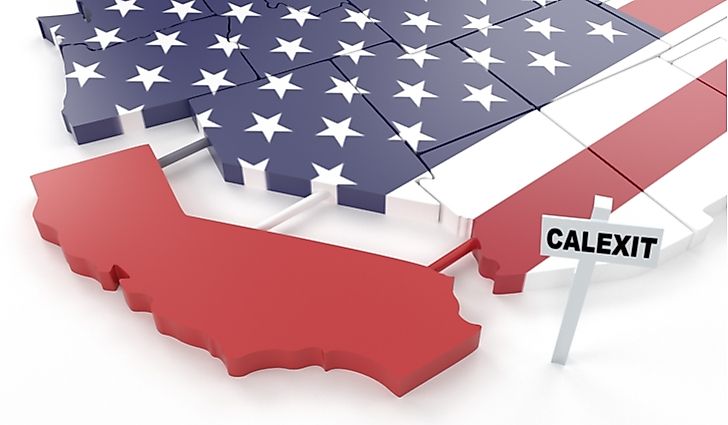Calexit And Other Secessionist Movements In U.S. History

The U.S. has faced several threats of some of its constituent states withdrawing from the union since the early 19th Century. Some of these efforts have been peaceful and even humorous with some resulting= in bloody wars. The American Civil War, for example, took place after the secession of the Confederate states. The war was between Americans making it the bloodiest war in the country’s history. Most of the secession threats were sometimes of genuine concerns.
5. New England Federalists Threaten To Leave A Virginia-Dominated U.S. in 1814
After the War of 1812, the Federalist Party of New England was unhappy due to the extensive effects of the war on the nation's industries and trade dynamics, which they saw as favoring the southern states, leading to their demands for secession from the union. The Hartford Convention of 1814 was convened as a formal expression of their grievances. The demands of the movement, including financial aid from the federal government, were hardly recognized as their delivery coincided with the celebrations for Andrew Jackson’s victory. New England later focused on the positive benefits the war had brought although the image of the party suffered greatly.
4. South Carolina and the 1828 and 1832 Tariff Nullification Crises
Between 1832 and 1833, the state of South Carolina's leading politicians had an ongoing contention with the federal government due to attempts by South Carolina to nullify the federal acts on tariffs of 1828 and 1832. These tariffs were seen to benefit the more industrialized north, leaving out the southern states that were heavily reliant on agriculture. South Carolina drafted the Nullification Act which was enacted in 1832. President Jackson requested the congress to pass a legislation to allow him use the federal troops to impose federal laws in case of nullification. However, armed confrontation was avoided when congress revised the tariff by introducing a compromise bill.
3. Secession of Southern States, the Confederacy, and the Civil War
In 1860, following the election of Abraham Lincoln as the President of the United States, Southerners felt that the more industrialized north would control them and destroy their economies, leading to these states' decisions to leave the Union. Among these states were Mississippi, Florida, Alabama, Georgia, Louisiana, and Texas. These states joined to form the Confederate States of America. Other states including Virginia, Arkansas, North Carolina, and Tennessee joined the confederation. Davis Jefferson was elected as the president of the Confederation. To mark their territory, the confederation attacked Union soldiers in the confederation’s forts leading to the American Civil War, which lasted from 1861 through 1865, leading to the death of thousands of Americans, and finally the collapse of the confederation and the abolition of the slave trade in America.
2. The Conch Republic
The Conch Republic was formed in 1982 after the federal government set up a roadblock in Florida without prior notification. This led to various requests to remove the roadblock as it caused congestion and losses due to delays in transport besides the discouraging of tourists. The federal government did not remove the roadblock prompting a declaration of secession from the US. The secession took place with the union flag being replaced by the flag of the new republic. The Republic is however still under the control of the United States. The secession’s anniversaries are celebrated yearly in a ten-day festival.
1. Talk of a Calexit in the Wake of the 2016 U.S. Presidential Election
After the 2016 U.S. General Election, many in California are calling for their state to make an exit from the Union to form an independent republic of their own. The reason for this is that many Californians are not content with the election of Donald Trump as the president, claiming that the US represents many beliefs that differ with those of the Californians. Hilary Clinton had 61% of votes in California, and this is not the first time California is threatening secession. If California succeeds in exiting the union, she will form the sixth largest economy and 36th most populous country in the world. Californians argue that they would do better as a nation than as part of the federation. For a state to secede from the union, it requires a two-thirds majority approval from the house and senate and backing of at least 38 of the union’s states legislatures making it very hard to leave the union.











